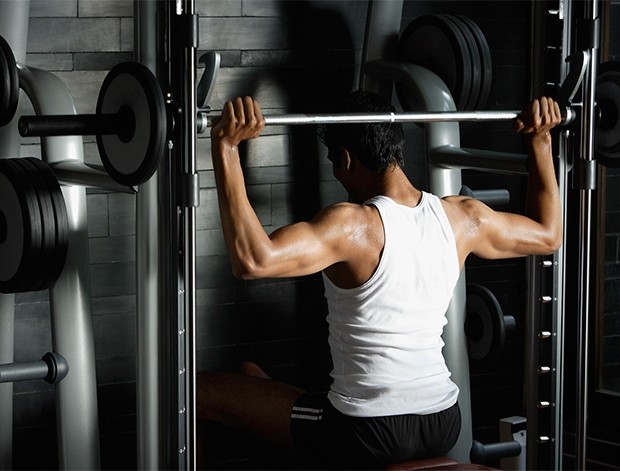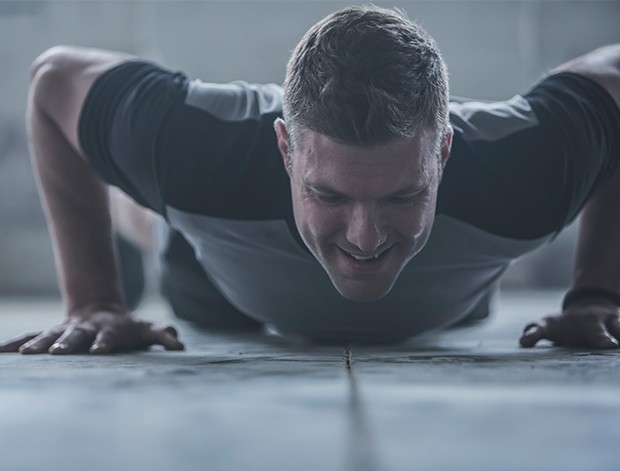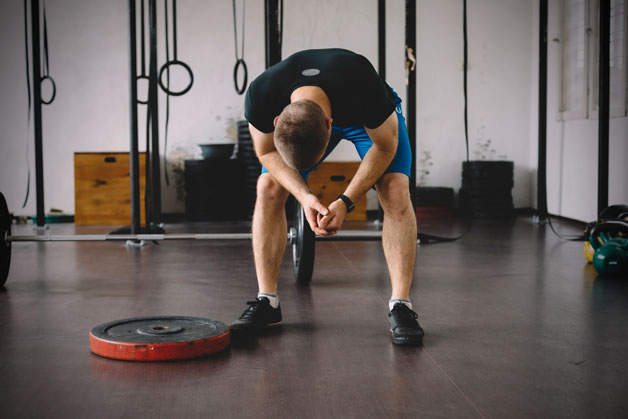
Shoulder injuries don’t discriminate. They account for up to 36% of all major weight-room injuries (that is, the ones severe enough to require medical attention), and they target big and small guys equally.
Morey Kolber, Ph.D., C.S.C.S., was one of those casualties. “I separated one shoulder and partially tore the rotator cuff on the other when I was lifting in high school,” he says.
Kolber needed three months of physical therapy to get his shoulder back into working order. His therapist’s advice moving forward was simple: Uselighter weights. But even though Kolber followed that wisdom carefully, within a couple of years he had seriously injured his shoulder again.

You may never be carted out of the gym with a blown shoulder the way Kolber was. But if you’re an average guy with a natural tendency to test your max bench or see just how much weight you can press overhead, chances are you have experienced shoulder pain at some point in your life.
That pain is a sign you’re doing something wrong, and larger problems could be looming. If the joint finally fails, with it goes the ability to do everyday tasks and activities you love. Everything from typing on a keyboard tosleeping through the night can become painful and challenging – in fact, more than 80% of people with shoulder pain report trouble sleeping.
You can also say goodbye to your favorite pastimes, like tossing a baseball with your kid or casting a line in your favorite trout stream. So take action and read on for four ways to protect this crucial joint.
(Related: Should I exercise through pain?)
1. Stop doing these exercises
Part of Kolber’s problem was that he received bad advice from both his physical therapist and his training partners. “The things I was told were good for my shoulders, I now realise were not,” he says.
Currently Kolber teaches at Nova Southeastern University, and he began studying shoulder pain in lifters in 2004. Almost immediately he found a strong link between shoulder pain and moves done with arms in the “high five” position, like the behind-the-neck pulldown and shoulder press – bodybuilding staples.
“These were exercises I did day in and day out,” he says. Rather than strengthening his shoulders, the moves were making the joints unstable bystretching the tissues tasked with protecting them.
Next he looked at what happens to those unstable joints. Impingement is something that occurs when your rotator cuff – the four muscles that hold your ball-and-socket shoulder joint together – is pinched within the tight space where it’s attached. The condition, caused by inflammation, can lead to chronic pain. Lifters who did upright rows and lateral raises with their elbows above their shoulders were most likely to have impingement.
Sore-shouldered lifters typically blame the bench press. It might be a perpetrator, but Kolber found proving that connection impossible.
“Some 95% of people I study do the bench press,” he says. “Determining whether it’s a culprit is hard when everyone does it.” Your best bet is to correct your form to minimize your risk.
(Realted: 3 ways to fix bench press shoulder pain)
2. Focus on your form
The most surprising result of Kolber’s 12 years of research turned age-old advice on its head: the weight of the load actually doesn’t seem to matter.
“People with good form who lift heavy don’t have a higher injury risk,” he says. “They’re told, ‘If it hurts, use less weight and do more reps.’ But it’s not the weight. It’s muscle imbalance and poor movement patterns that cause damage.”
In fact, Kolber says, doing a lot of reps with bad form on any shoulderexercise is a terrible idea, no matter how light the weights are. It’s far better to do fewer reps with heavier weights while maintaining perfect form – that is, unless you’re doing those “high five” exercises. Then you’re screwed no matter how good your form is.

3. Strengthen your traps
Kolber discovered two big differences between lifters with shoulder pain and those without: the pain-free lifters were more likely to do external-rotation strengthening exercises. These moves target your external rotators, small muscles at the back of your shoulders that help stabilize your shoulder joint, balancing your deltoids and reducing your risk of impingement.
Also, in their upper back, their lower trapezius muscles were stronger relative to their upper traps. Your lower traps are easy to strengthen: Just consciously pull your shoulder blades down and together. That alone increases lower-trap activation by 13%, Kolber says. Do that before each rep on lat pulldowns and pullup variations, and they’ll be better able to protect your shoulders.
(Related: Do you need a foam roller?)
4. Don’t sleep on your sore side
Your sleeping position has a big impact on how quickly you recover and may even affect your future injury risk, says Kolber.
If you do have pain or an injury, try to avoid sleeping on the hurt side with your head resting on your arm. Doing that can cut off bloodflow to your injury, which in turn slows down the repair process.
But even if you don’t have pain, cutting off bloodflow to one shoulder every single night can make the joint more prone to injury.
Here’s Kolber’s recommendation: If you’re feeling pain, sleep on the unaffected side with your arms out in front of you or hugging a pillow. This position facilitates bloodflow. Pain-free? Sleep in that same position but alternate sides nightly.
A version of this article originally appeared on MensHealth.com
